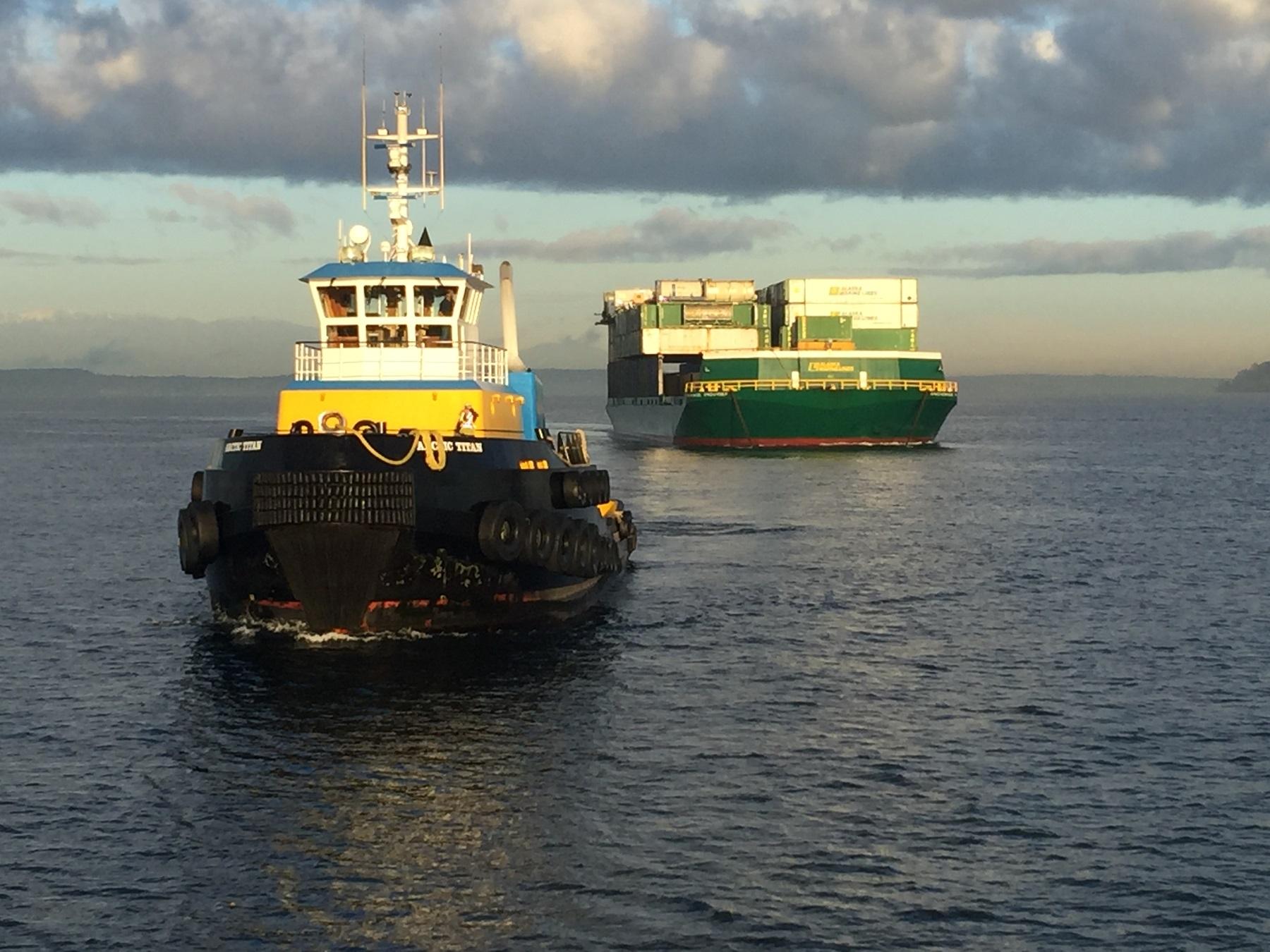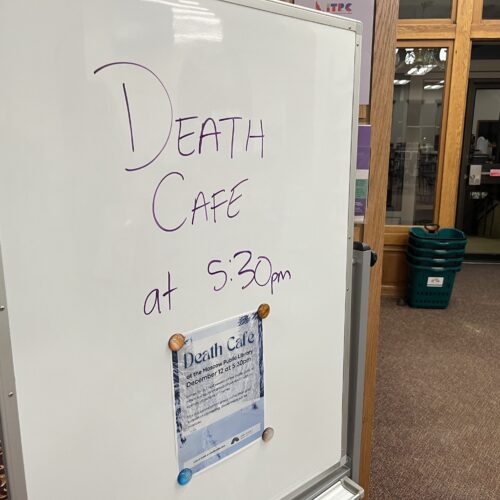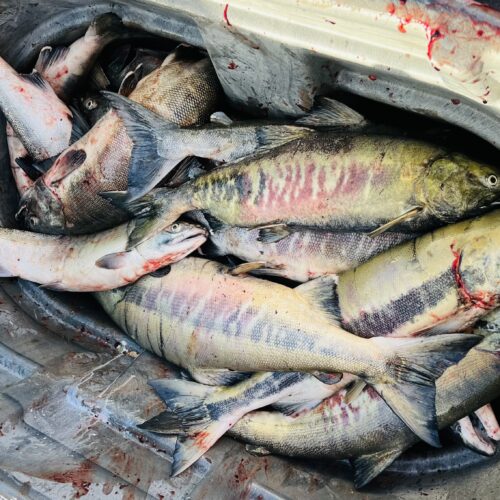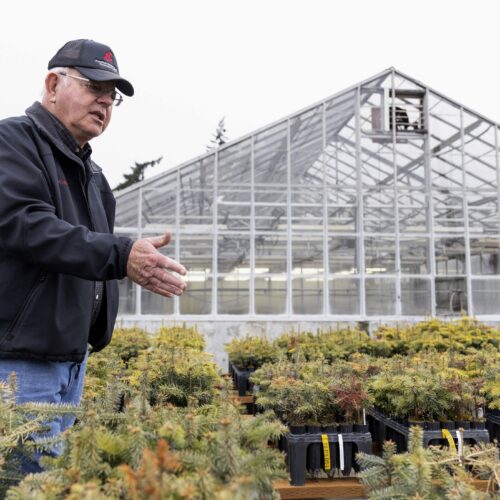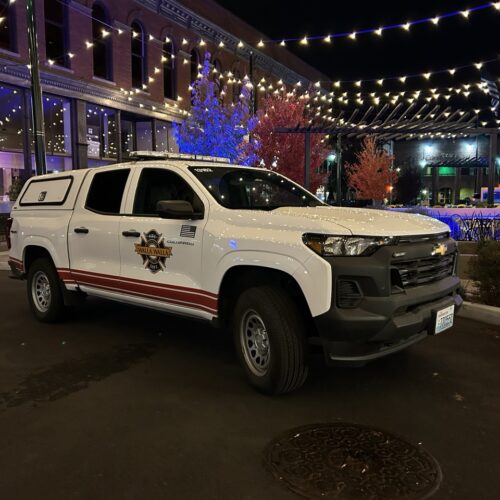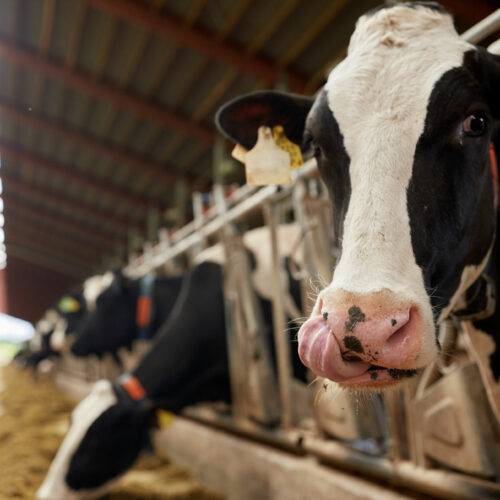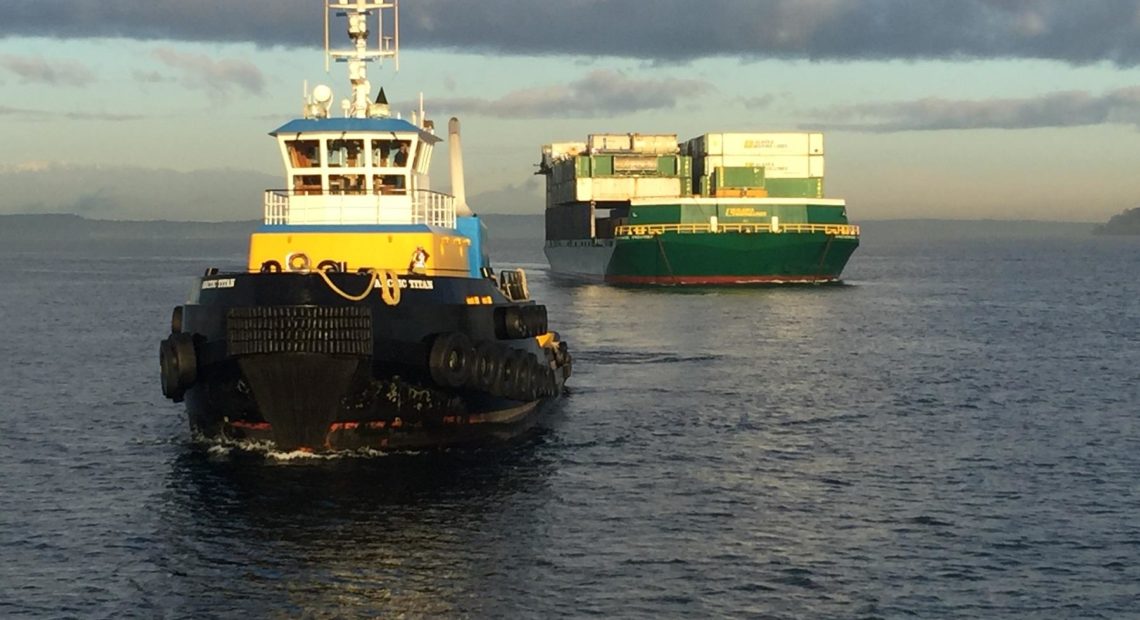
Pandemic Hasn’t Interrupted Alaska’s Resupply Lifeline From The Northwest, And Woe If It Does
Listen
The coronavirus pandemic has served to remind many of us how much we count on strangers staying healthy so we can restock our cupboards and go about daily life. That’s especially true for Alaskans who depend on a marine cargo lifeline from the Pacific Northwest for the majority of their goods.
Most days of the week, at least one ocean-going tugboat heads out from Puget Sound going north to Alaska with a heavily laden barge in tow. The tug crews fit into a category of essential workers the general public rarely sees — even less so now that shore leave by mariners and visitors boarding the vessels are almost completely forbidden.
“It’s good to be a part of the system that keeps the area where you grew up and raised your family supplied,” said Captain Pete Erickson, who helms the Western Titan, a tug in the Western Towboat Company fleet. “It’s really personal for me.”
Erickson shared the cozy confines of the tug with a crew of five as they set out from Seattle last Friday bound for Ketchikan, Juneau and other Southeast Alaska ports. The barge they had in tow was stacked 40 feet high with containers full of all the things sold in grocery and hardware stores, plus construction equipment, vehicles, and last but not least, alcohol.
When barges come back, they carry Alaska fish to market, along with empty shipping containers, containerized municipal garbage destined for the large regional landfills near the east end of the Columbia River Gorge and a bit more alcohol sometimes — beer for the Lower 48 from Alaskan Brewing Company in Juneau.
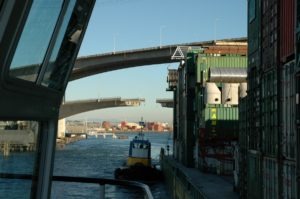
Western Towboat pulls freight barges for Alaska Marine Lines, the dominant cargo hauler to Southeast Alaska. The trickiest part of the journey is at the very beginning when the freight barges must pass the bridges at the mouth of the Duwamish Waterway. CREDIT: Alaska Marine Lines
Erickson said dealing with the coronavirus has made the roundtrips to Alaska a lot different this summer compared to years past. The state of Alaska required tug companies to file plans for how they’d keep their crews healthy, as well as how to avoid spreading the virus into small towns with limited medical care.
One big operational change is that tug and barge crews now have to stay onboard throughout their voyage. Western Towboat Vice President Russell Shrewsbury explained that contact with people on shore must be minimized. Previously, crews would go to the store when they got to Alaska and resupply on produce and other kinds of stuff.
“We can’t do that now,” Shrewsbury said in an interview. “If they have friends there, they used to be able to come visit. We haven’t been able to do that.”
Interactions with customers and port staff are basically done over a telephone now.
The caution extends to the downtime between voyages. Shrewsbury said he advises his crews to avoid contacts with people besides family members when they’re home. Western Towboat does temperature screenings before reboarding, but the company is not enforcing a strict pre-departure quarantine or ordering COVID testing like some Northwest seafood companies did with seasonal workers they sent to Alaska this year.
“We’re not going to chain anybody to their homes,” Shrewsbury said. “We just want people to be really smart about who they interact with because the implications it could have on the supply chain for Southeast Alaska could be devastating if we started having the virus run through the tugboats and people were getting sick.”
So far, so good, said Shrewsbury. Other marine cargo companies on the Alaska circuit such as Cook Inlet Tug & Barge, Foss Maritime and Centerline Logistics said they too have not had crew members get sick with the virus at sea.
Tote Maritime and Matson transport containers and vehicles from Tacoma to Anchorage and southwest Alaska on large cargo vessels. Tote said it is maintaining its regular schedule but limiting interactions between ship crews and people on shore to avoid COVID exposures, like the tug and barge companies do.
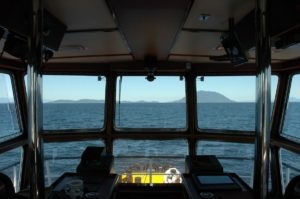
The view from the wheelhouse of the Pacific Titan tugboat along the Inside Passage to Alaska. CREDIT: Alaska Marine Lines
“The barges never stopped coming and we don’t want them to stop coming,” said Mila Cosgrove, deputy city manager in Juneau and the local COVID-19 incident commander.
Cosgrove said it would be very bad if there were an interruption in the marine supply links. In an interview, she noted that a lot of Alaska towns, including hers, are geographically isolated by virtue of not having a road connection to the outside world. Resupply comes either by airplane, which is very expensive, or by sea.
“It’s not an option to say we’re going to get it from someplace else,” Cosgrove said.
The relative isolation helped keep COVID away for a good while. But now the West Coast’s interconnected economies and the relentless nature of the virus are converging. The COVID case count in Alaska soared recently. Partly, that’s due to outbreaks in seafood processing plants and on board a factory fishing trawler based out of Seattle.
On a per capita basis, Alaska diagnosed 113 new cases per 100,000 people over the past seven days, which means Alaska surpassed Washington state (68 cases per 100,000) and Oregon (51 per 100,000).
Alaska breaks down its COVID statistics between residents and non-residents, with the latter category including seasonal workers and travelers who test positive in the state. The latest numbers posted Tuesday showed 2,729 Alaska residents have tested positive since the pandemic began, along with 621 non-residents.
Where things get extra complicated is when crew changes happen and relief crews fly in from the Lower 48. The marine cargo vessel crews are considered “critical workforce,” so the workers get some latitude for how to observe the otherwise mandatory 14-day self-quarantine for all travelers who arrive in Alaska. The state allows critical workers to go straight to their vessel and start working. COVID testing is not required for vessel crewmembers, but the state highly recommends it.
The president of Anchorage-based Cook Inlet Tug & Barge said his company has increased the duration of on-duty shifts to decrease the number of crew changes and travel.
“The 14-day quarantine comes kind of natural to our guys,” Johnson said in an interview Tuesday. “They work in pretty remote areas.”
In the wheelhouse of the Western Titan with the chatter of marine radios softly crackling in the background, Captain Erickson mentioned one silver lining of the pandemic. He noted the absence of big cruise ships on the water, which can create bottlenecks and tight squeezes in the narrow channels and ports along the Inside Passage. The Canadian and American governments shut down the 2020 Alaska cruise season to reduce the risk of virus spread.
“My stress level has gone down a lot as I navigate between Seattle and Alaska,” Erickson said. “I know a lot of people depend on that tourism money. For my own selfish reasons, I don’t miss them one bit.”
Erickson himself was forced off the water for six weeks this spring when he contracted COVID-19 at a Seattle hospital while attending to his dying father. Relatives organized surprise welcome back greetings in Petersburg and Skagway on Erickson’s first work trip north after his recovery to show he was missed as well as show appreciation for everyone maintaining the marine supply line. Erickson was raised in Southeast Alaska, but now lives on Camano Island, Washington.
“We had no clue what was going on,” Erickson said, remembering his first thoughts upon noticing unusual crowds lining the shore as his tug and freight barge motored by in late April.
“What the heck are all the firetrucks doing down here? Why are all those people at the dock?” Erickson asked as the tug pulled in to Skagway. Then he saw the flags and signs, heard the honking and figured it out.
“That was pretty cool.”
Erickson’s status as a recovered COVID patient with immunity makes him a rare exception under Alaska’s COVID mitigation rules, allowing him to leave his vessel while in Alaska to visit friends and family on shore.
Related Stories:
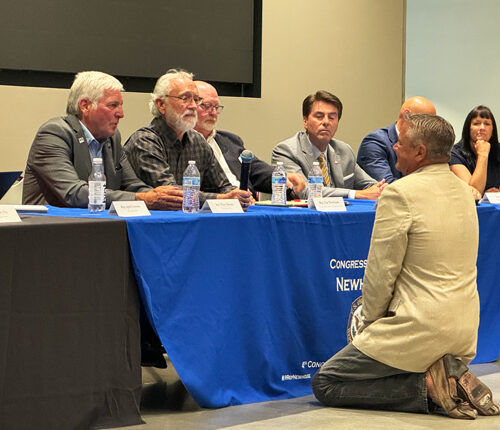
Tri-Cities forum draws support for Lower Snake River dams
At a Lower Snake River dams forum in the Tri-Cities, Chuck Bender, who said his family members are tugboat operators, fell to his knees in front of U.S. Rep. Dan

PNW artists’ work evokes salmon to educate, inspire change
Northwest artists have drawn inspiration from salmon as long as people have walked along the running streams. But, the movement to close four dams on the lower Snake River has some artists, activists and naturalists hopeful that their pieces will not only tug at heartstrings, but also move forward the conversation of salmon conservation and restoration.
Washington Gov. Jay Inslee recently signed budget bills to study removal of the four dams. Activists have been calling for the dam removals in order to preserve and restore salmon populations.
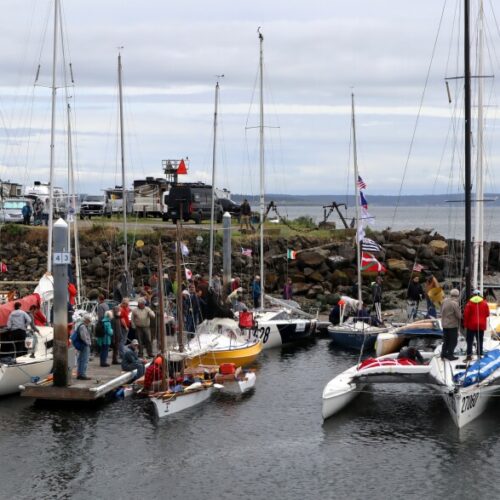
The ‘Best Worst Idea.’ Race To Alaska For Engineless Boats Returns After Pandemic Hiatus
A Northwest adventure race that some call “the best worst idea” has returned after a long, pandemic hiatus. The 2022 running of the Race to Alaska for engineless boats cast off at the first light of dawn Monday amid high winds in the Strait of Juan de Fuca that the organizers characterized as “between seasick and dangerous.”

